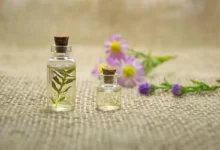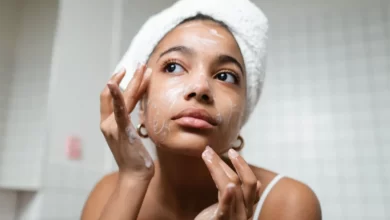Introduction
In the quest for radiant and flawless skin, exfoliation stands as a fundamental pillar of a well-rounded skincare routine. The art of exfoliation involves the delicate process of gently removing dead skin cells, unveiling the fresh, vibrant complexion that lies beneath. This practice not only refines the skin’s texture but also paves the way for other skincare products to work their magic effectively. With an array of exfoliating scrubs gracing the beauty market, each claiming to be the key to glowing skin, selecting the perfect fit for your unique skin type and concerns can be a perplexing journey. Fear not! This comprehensive guide is here to demystify the exfoliation landscape, shedding light on the key ingredients, varied types, and expert techniques to empower you with the knowledge needed to make a well-informed decision for your skincare regimen.
Understanding Exfoliation
Before we dive into the nitty-gritty of selecting an exfoliating scrub, let’s lay a solid foundation by understanding the science behind exfoliation. At its core, exfoliation is the process of gently removing the outer layer of dead skin cells from the skin’s surface. This seemingly simple act yields a multitude of benefits, including unclogging pores, stimulating cell turnover, and facilitating the absorption of subsequent skincare products.
Exfoliation comes in two primary forms: physical (also known as manual) and chemical. Physical exfoliation involves the use of a scrub or a tool to manually slough off dead skin cells, whereas chemical exfoliation utilizes specialized acids to dissolve the bonds between cells, encouraging their natural shedding.
Factors to Consider Before Choosing an Exfoliating Scrub
Skin Type
Embarking on the journey to find your perfect exfoliating match begins with understanding your skin type. Different skin types exhibit distinct characteristics, and tailoring your exfoliation routine to match your skin’s needs is essential for optimal results:
- Oily Skin: If you’re prone to excess oiliness and frequent breakouts, your ideal exfoliating scrub should boast a blend of gentle physical exfoliants such as jojoba beads or sugar, accompanied by potent chemical exfoliants like salicylic acid. This dynamic duo works harmoniously to combat oiliness, unclog pores, and keep breakouts at bay.
- Dry Skin: For those with a propensity for dryness, exfoliating scrubs enriched with moisturizing ingredients like shea butter, glycerin, or lactic acid offer a dual-action approach. These scrubs not only buff away dead skin cells but also infuse essential hydration to prevent over-drying and maintain skin suppleness.
- Sensitive Skin: Sensitivity requires a delicate touch. Opt for exfoliating scrubs with mild physical exfoliants such as finely ground rice powder or oatmeal. Even better, consider enzyme-based scrubs, which harness the power of natural fruit enzymes (think papaya or pineapple) to gently dissolve dead skin cells without causing irritation.
- Combination Skin: Balancing act in progress! Combination skin types can benefit from exfoliating scrubs that strike a harmonious blend of physical and chemical exfoliants. This approach effectively addresses the unique needs of both dry and oily areas, ensuring a unified complexion.
Ingredients
Behind every effective exfoliating scrub lies a meticulously crafted blend of ingredients that determine its potency and suitability for your skin. Scan the product label for these powerhouse components:
- Physical Exfoliants: These often take the form of finely ground particles, such as seeds, sugar, salt, or microbeads. When perusing the ingredient list, prioritize scrubs with rounded particles to avoid micro-tears on the skin’s surface, which can lead to irritation.
- Chemical Exfoliants: The heroes of chemical exfoliation are alpha hydroxy acids (AHAs) like glycolic and lactic acid, as well as beta hydroxy acids (BHAs) like salicylic acid. AHAs excel at surface exfoliation, unveiling a smoother complexion, while BHAs penetrate deeper, making them an exceptional choice for those grappling with oily or acne-prone skin.
- Enzymes: Nature’s gentle exfoliators, enzymes derived from fruits like papaya, pineapple, and pumpkin work harmoniously to dissolve dead skin cells. These enzymes are particularly gentle on sensitive skin, offering a non-abrasive option for achieving a refreshed glow.
- Moisturizing Agents: Hydration is a non-negotiable aspect of any skincare routine. Seek out exfoliating scrubs enriched with moisture-locking ingredients such as hyaluronic acid, aloe vera, and nourishing natural oils. This ensures that your skin remains hydrated and comfortable throughout the exfoliation process.
- Antioxidants: The modern-day warriors against environmental stressors, antioxidants play a pivotal role in maintaining skin health. Opt for exfoliating scrubs infused with ingredients like green tea extract, vitamin C, and niacinamide. These antioxidants shield the skin from free radicals, contributing to a radiant complexion.
Skin Concerns
Exfoliating scrubs aren’t just a one-size-fits-all solution; they can be customized to target specific skin concerns beyond basic exfoliation:
- Acne-Prone Skin: If acne is a recurring concern, direct your attention towards exfoliating scrubs featuring salicylic acid. This powerhouse ingredient delves deep into pores, preventing congestion and thwarting potential breakouts.
- Dullness: Lackluster skin craves the attention of exfoliating scrubs infused with enzymes or glycolic acid. These adeptly eliminate the buildup of dead skin cells, unveiling a radiant complexion that exudes vibrancy.
- Fine Lines and Wrinkles: Combatting the signs of aging necessitates a strategic choice. Opt for exfoliating scrubs that boast glycolic acid or retinol. These ingredients work harmoniously to stimulate collagen production and refine skin texture, resulting in a smoother, more youthful appearance.
- Hyperpigmentation: Battle scars in the form of dark spots require the intervention of exfoliating scrubs enriched with potent ingredients like vitamin C or kojic acid. These skin-brightening agents fade hyperpigmentation, gradually revealing an even skin tone.
Frequency
Over-exfoliation can damage the skin’s barrier and lead to irritation. Determine how often your skin needs exfoliation based on its sensitivity:
- Sensitive Skin: Adopt a gentle approach by exfoliating once or twice a week. This cautious strategy minimizes the risk of irritation.
- Normal to Combination Skin: The golden rule for these skin types is to exfoliate 2-3 times a week. This routine ensures consistent skin renewal without overwhelming the skin’s barrier.
- Oily or Acne-Prone Skin: Embrace a slightly more frequent exfoliation routine of 3-4 times a week. The goal is to keep excess oil and breakouts at bay while maintaining skin balance.

Choosing the Right Exfoliating Scrub
With an understanding of your skin type, concerns, and preferences in hand, it’s time to choose the perfect exfoliating scrub for your skincare routine. Consider these final tips:
- Patch Test: Before fully incorporating a new exfoliating scrub into your routine, exercise prudence by performing a patch test. Apply a small amount of the product to an inconspicuous area of your skin and monitor it for 24 hours. This precautionary step helps identify any potential adverse reactions.
- The Wisdom of Reviews: Leverage the power of peer experiences. Seek out reviews from individuals who share your skin type and concerns. Their insights can provide invaluable guidance on a product’s efficacy.
- Avoiding Excess: In the realm of exfoliation, restraint often yields better results. Initiate your exfoliation journey with a lower frequency and gradually increase it if your skin responds positively. Over-exfoliation can lead to irritation and compromise the skin’s natural barrier.
- Sticking to Guidelines: Manufacturers offer recommended usage instructions for a reason. Adhering to these guidelines optimizes results while minimizing the risk of irritation or adverse effects.
- Sunscreen: Your Exfoliation Ally: It’s vital to remember that exfoliation can render the skin more sensitive to the sun’s harmful rays. Complete your morning skincare routine with the application of a broad-spectrum sunscreen to safeguard your skin’s newfound radiance.
Conclusion
Selecting the right exfoliating scrub is a pivotal step in achieving a vibrant and youthful complexion. By considering your skin type, concerns, and preferences, you can make an informed decision that aligns with your skincare goals.
Remember, exfoliation is not a one-size-fits-all approach; it’s a personalized journey that requires attention to detail and a commitment to your skin’s health. Armed with the knowledge from this ultimate guide, you’re well-equipped to embark on your exfoliation journey and unveil your skin’s natural radiance.









